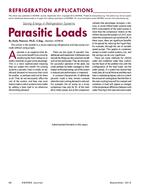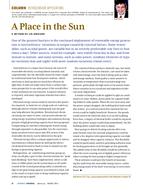Aboriginal families are significantly more likely to live in poor housing conditions than the general population.Furthermore, in Canada, most of these houses are often located in colder regions, which challenge the construction, the indoorair, and the energy consumption. Poor housing is also related to poor child health outcomes. The overarching goal of thisresearch is to develop a health monitoring system integral to homes that acts as preventive early warning system beforeproblems become serious and sometimes irreversible. The underlying premise is that higher value can be gained from asystem that combines different types of monitored data, such as indoor, construction, and energy, in building awareness andenabling better informed decision-making by homeowners. This paper presents the results from a pilot study to generatepreliminary knowledge on the key challenges faced in attempting to develop and deploy such a system in remote regions. Inthe study, the indoor environment and the construction moisture of three new homes from the urban Squamish First Nationsreserve in Vancouver are being monitored. The construction is typical of local urban reserve homes. The indoor parametersmonitored are relative humidity, temperature, and carbon dioxide. The construction parameters monitored are the envelopemoisture content and temperature. Expectedly, preliminary indoor environmental data indicate the houses are performingwell. However, warning signals from the construction need close attention. Furthermore, occupants, unaware of the energypenalties, seem to be driving higher ventilation rates. Consequently, validated energy simulation models were used to informoccupants on the price of excessive ventilation habits. Squamish home builders were given a performance report, withalternatives to address current issues and improve performance in future houses. The results from the pilot study demonstratethe value of a holistic monitoring system integral to homes. Further work is required to address the practical aspects of thetechnologies involved and to elaborate on the knowledge to implement a monitoring platform to make the systemsoperational on a wider scale.
Citation: IAQ Conference: IAQ 2013: Environmental Health in Low Energy Buildings
Product Details
- Published:
- 2013
- Number of Pages:
- 11
- File Size:
- 1 file , 2.7 MB
- Product Code(s):
- D-2013IAQConf-48


